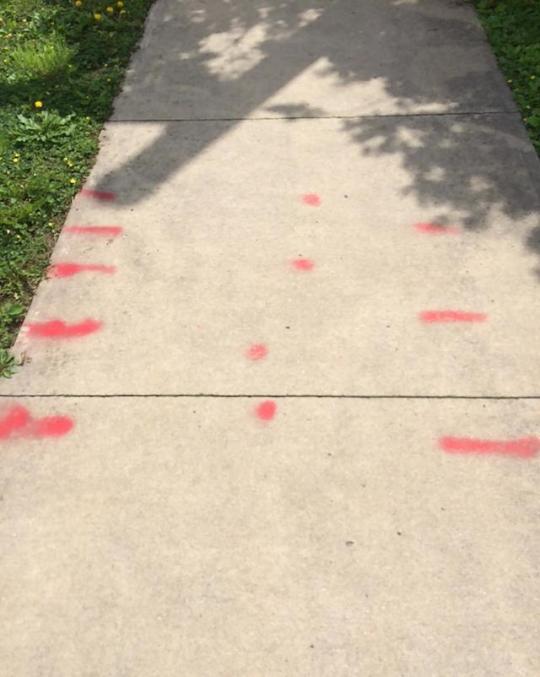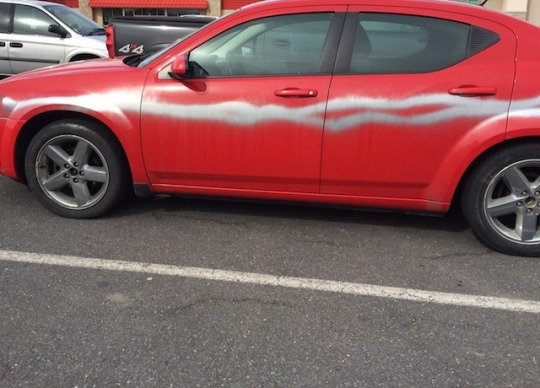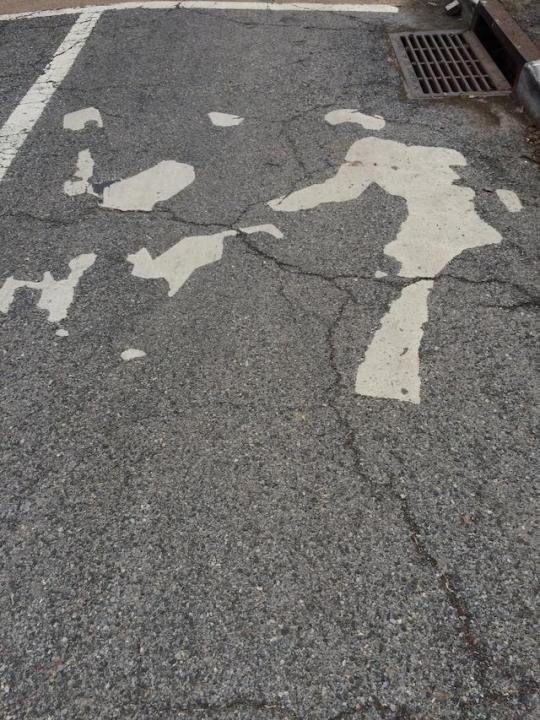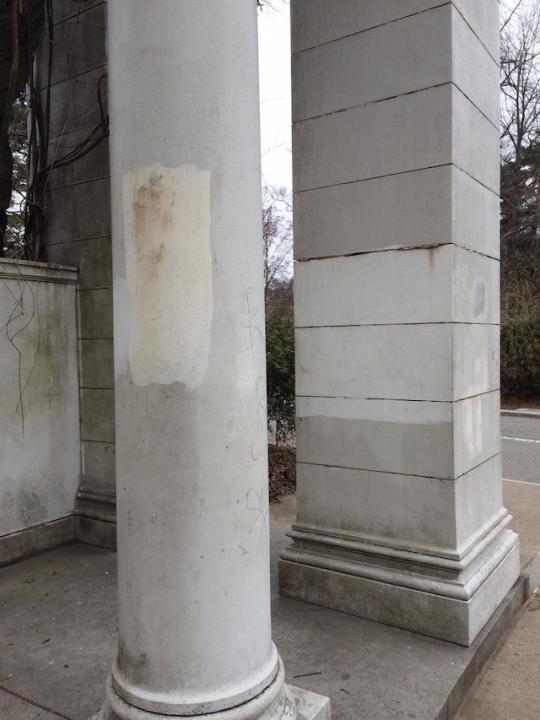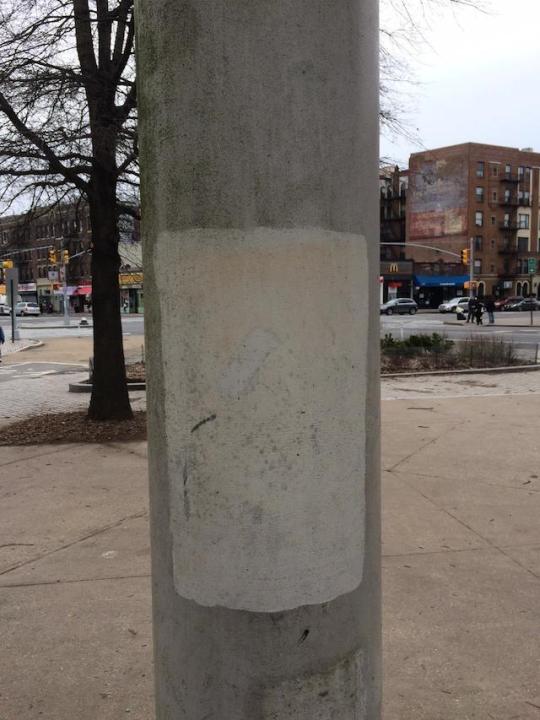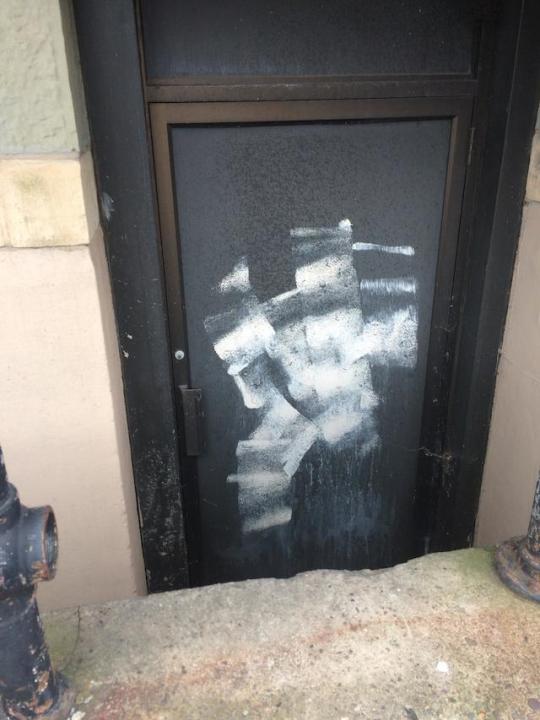Ithaca MoMA is Sean Montgomery. Find out more at seanmontgomery dot ca The official tumblr of The Ithaca Museum of Modern Art. Contact: IthacaMOMA at gmail dot com
Don't wanna be here? Send us removal request.
Text
FOLLOW US ON INSTAGRAM
We are now on Instagram. Follow along at: instagram.com/ithacamoma
1 note
·
View note
Text
ITHACA VERNACULAR ABSTRACTION #130 (DANVILLE PA POTATO CAM EDITION)
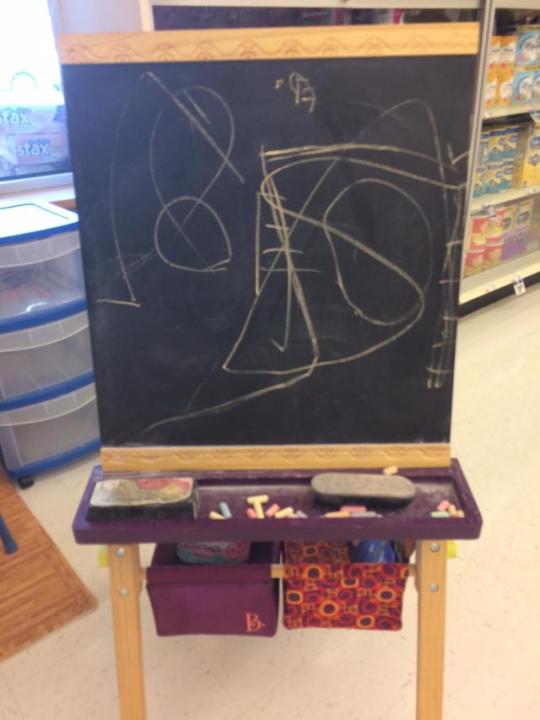
1 note
·
View note
Text
ITHACA VERNACULAR ABSTRACTION #129 (DANVILLE PA EDITION)
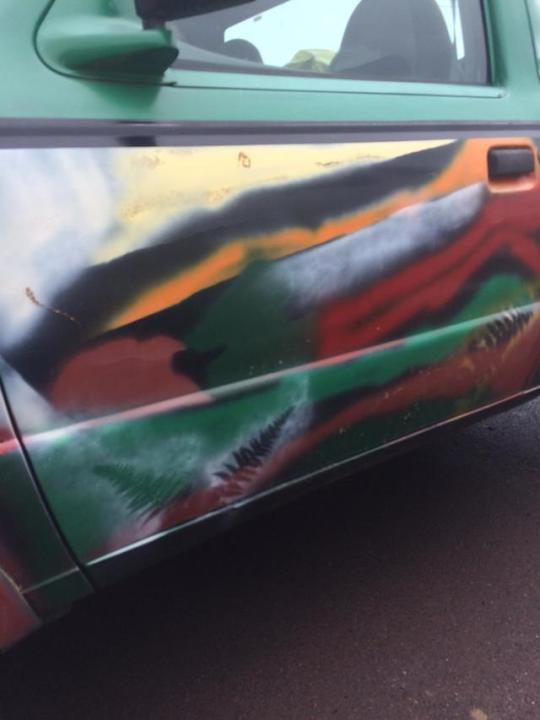
1 note
·
View note
Text
20 QUESTIONS FOR: TAMMY SALZL
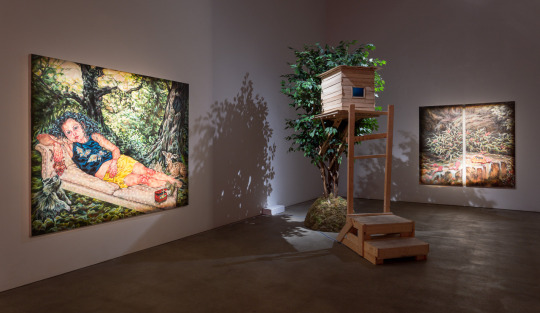
image courtesy of the artist and DC3 Art Projects
1.Name:
Tammy Salzl
2.Occupation(s):
Artist, Sessional Teacher in Senior Level Painting at the University of Alberta.
3.Where are you from and what is your education?
I was born in Edmonton, AB, into a gigantic dysfunctional family with 18 aunts and uncles, 42 first cousins and barely one parent. I spent my summers being tortured as an English speaking city slicker in French speaking prairie farm communities. Retreating into art and stories and animals was the salvation I didn’t find in the fundamentalist religion I was periodically thrown into. For my undergrad I did 2 years at ACAD (Now called AUArts), and finished my BFA at the University of Alberta. I received my Masters in Studio Arts (Painting) at Concordia University in Montreal 2014 and have been expanding my practice to include video and multimedia installation since graduation.
4.Where do you live/work (neighbourhood/city/country)?
For the past 3 yrs I’ve been splitting my year between the Southside of Edmonton, AB. and Parc Ex in Montreal QC. I have family in both places, which makes this both possible and necessary.
5.Does your location affect your practice?
Definitely! Emotionally, psychologically and logistically. I’m lucky to be able to spend time in both eastern and western Canada. Sometimes they seem like entirely different worlds and it’s a privilege to be able to step into both. It broadens my field of vision.
6.What is your favourite tool in the studio?
I have two favourite things. My glue gun, because I love glueing stuff, it makes me feel like a little kid again! I also love it when I have a fresh, unused brush in hand.
7.Where do you look for your source material?
Everywhere! Movies, books, (I love sci-fi books, and I just finished 2 books by Yuval Noah Harari - Sapiens and 21 Lessons for the 21st Century - so gooood!) mythology, ecology, weird/wondrous animals (like the barrel eye fish or the Aye-aye), bus stops, Edmonton’s River valley, back alleys in Montreal, weird stop motion animations, the fresh sights, sounds and smells that come with travel, looking at art and, occasionally, the bottom of my wine glass.
8.What is you daily art world read?
I email subscribe to a bunch of art blogs (like Hyperallergic and artdaily.org etc), and I also try to read Border Crossings and Canadian Art magazines, but honestly a lot of my art world reads come from instagram. Cuz you know… pictures.
9.What is your daily non-art-world read?
I love science and nature blogs. I really enjoy nature.com, naturecanada.ca, futurism.com/, and for quick global news stuff I like Quartz Daily Brief. It’s hard…you don’t want to be ill informed yet it’s so bleak out there…I think overexposure to media can be harmful. I try to find a balance.
10.What role does writing play in your practice?
Sadly, not much. It’s an inescapable task for every artist, and one I dearly wish I could escape. That said, aside from the necessary evil of artist statement/proposal/grant type of writing, I sometimes play at creative writing. I make little one page tales that turn into paintings, or I write a short narratives based on something I’ve made. I’ll often have automatic writing embedded in my underpaintings, and if you look hard enough you can sometimes find traces of a word here and there.
11.What role does research play in your practice?
Because I peddle in tales, I research the history, culture, psychology, pop culture, philosophy of whatever traditional tale or mythology I’m referencing, and how others have interpreted those tales over time - even if I’m referencing something like Dr. Seuss. I often tie that into the research I do out of my interest in ecology and nature. For me, working representationally means there is intension in everything. I try to have layers of meaning and make work that engenders multiple interpretations. I research the symbolism and history of objects, places, animals, colours , etc. With my installations there is a lot of material research involved as well.
12.What role does collaboration play in your practice?
Since expanding my painting practice into intermedia work, I’ve done quite a bit of collaborating in the form of “I don’t know how to do this technical thing so I need to find someone who does”. It’s taught me a lot in terms of learning to communicate and work with others. As a solitary person, it’s a challenge for me, but I also find it incredibly rewarding and enriching. Also, a couple of years ago 4 female artist friends and I began an art collective called IFPP (incubator for phantom pregnancies) We’ve staged a couple exhibitions and have some upcoming shows, and it’s been really great. You learn a lot about yourself in a collaborative process, and it’s exhilarating ending up with this thing you helped create, but in a mind hive kind of way.
13.How does success affect your practice?
Ideas of success are pretty subjective, no? Speaking in terms of non-commercial success, I would say it helps drives my practice forward. It gives you the incentive and confidence to keep going, to make more, to take risks and think bigger. Sometimes commercial/monetary success can do the opposite because you’re expected to make more of the same, sellable stuff - to keep the formula and not colour outside those lines.
14.How does failure affect your practice?
Failure is an opportunity to learn, and can lead to amazing things. I suck at it. I can be super stubborn and fight with a painting that’s not working for days and days. I’m often my own worst enemy. I’m learning to walk away, to turn the bloody thing facing the wall and only come back to it when I can be more objective - when I’m in a better place to paint over the 100 hours invested and start over.
15.What do you identify as the biggest challenge in your artistic process?
My own stubbornness! My own rules and obsessiveness and need for control. I can get restrained by fear of making something ‘bad,' and I struggle to let myself play more, to let myself ‘fail’. I can get too caught up in my own head. I struggle with a lot of self doubt. A dear friend of mine recently sent me a beautiful quote by Robert Hughes in an attempt to assuage my doubt:
“The greater the artist, the greater the doubt. Perfect confidence is granted to the less talented as a consolation prize.”
I’m not so sure this is the case, but it’s nice to hear!
Also, like so many of us, I struggle socially and will hide in my studio rather than go to an art opening when I know I should be trying to make “connections”. Wine helps tremendously in all my struggles.
16.Who are some historical artists you are thinking about?
This fluctuates a great deal. I often find myself interested in artists I thought I didn’t like years ago, and will lose interest in artists I thought I loved. Art crushes come and go. I just bought a Frida Kahlo book and am rediscovering my fascination with her.
17.Who are some contemporary artists you are thinking about?
Everyone and no one in particular. I was in LA last January and saw an amazing Outsider Art show at LACMA. There was a piece by Greer Lankton titled, “Candy Darling” depicting a transgender actress who was featured in several of Andy Warhol’s films and was one of Lankton’s icons she looked up to as a trans woman. It’s exquisite with an edgy sexuality - totally blew my mind. I also saw some Mark Bradford works at The Broad that really surprised me. You have to be in front of them to understand how profound, beautiful, raw and sophisticated they are.
18.How do you describe what you are making now?
Right now I’m bouncing all over the place with various mediums. I’m working on a new series of oils, sort of taking the piss out of patriarchal old fables and the misogynistic way they portrayed women by retelling them through a contemporary lens. I’m also making a series of small, intricate “naughty fairies” made out of Sculpey (imagine tinker bell-like creatures going down on each other), some larger installation pieces that incorporate a variety of materials - video, sound, found and crafted objects, and I just completed my first short narrative video with footage shot on an artist residency I did in Norway last year.
Sometimes I feel like I’m spreading myself too thin and there’s an invisible pressure to focus on one thing, but I’m a storyteller and I use whatever mediums best suites the tale. I think everything I do remains distinctly me, it all has connective threads. Generally I paint in the morning and move onto video and sculpture in the afternoon/evening. Painting is mentally challenging in a very singular way; it’s super humbling and I need a fresh, rested brain to do it.
19.Who is an artist that you think deserves more attention?
Oh man. Too many to count. Seems to me art world trends often translate into amazing artists not getting their due. I think Canadian artists in general deserve more of the international spot light. There’s so much talent here.
20.How can we find out more about you (relevant links etc)?
I keep my website pretty up to date, including upcoming shows and press links etc.
www.tammysalzl.com
2 notes
·
View notes
Text
STUDIO VISIT: ERIK NIEMINEN
As he readies for his NYC solo exhibition debut in June 2019, the curatorial team of the Ithaca MoMA made a visit to the studio of Montreal based artist Erik Nieminen. Photos follow:

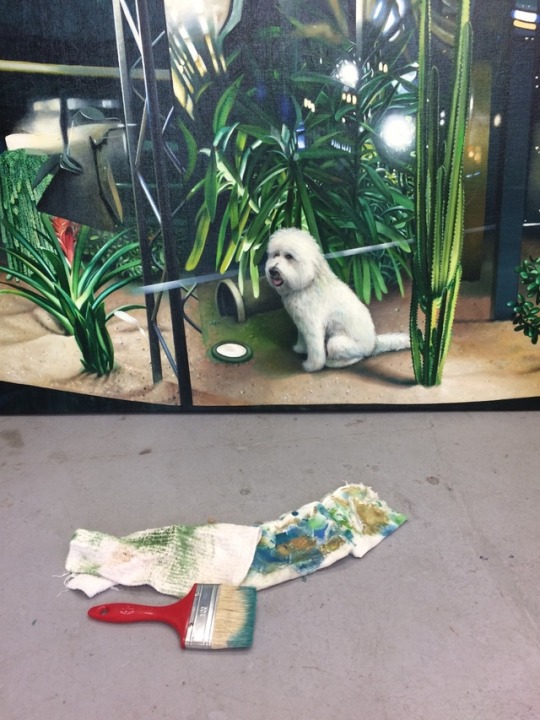
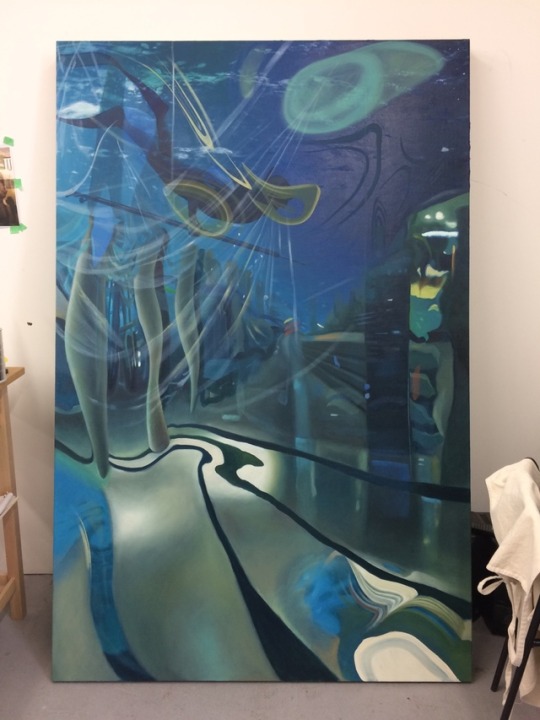
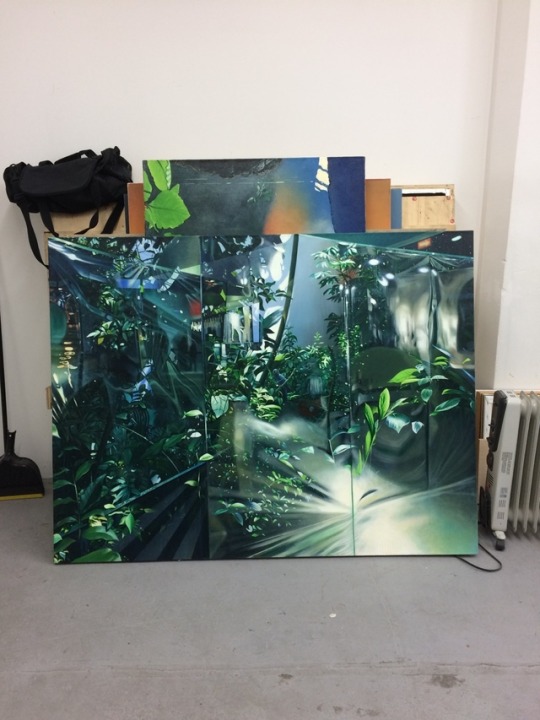

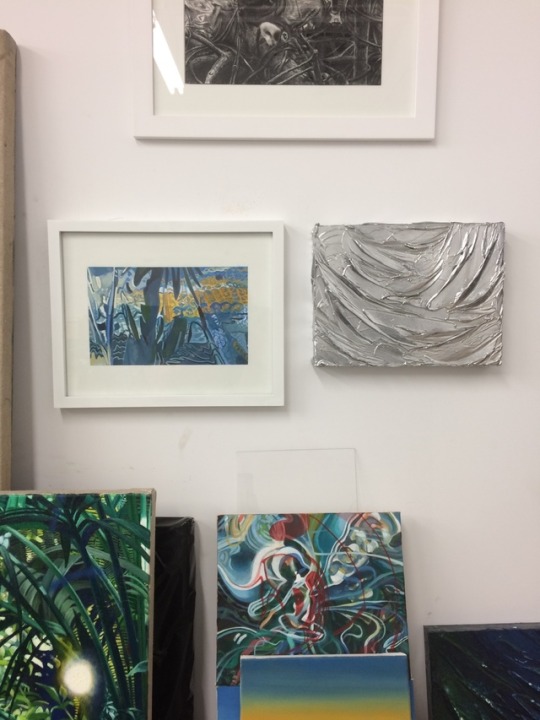
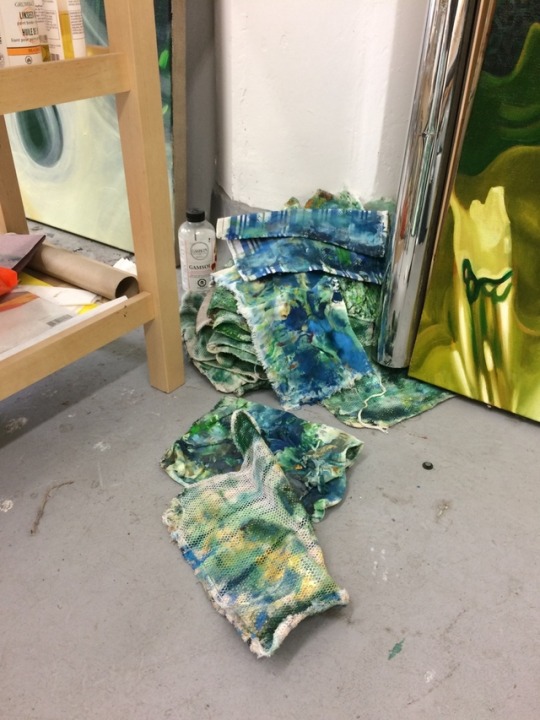
0 notes
Text
ITHACA VERNACULAR ABSTRACTION #120 (DANVILLE PA EDITION)

1 note
·
View note
Text
20 QUESTIONS FOR: TREVOR KIERNANDER
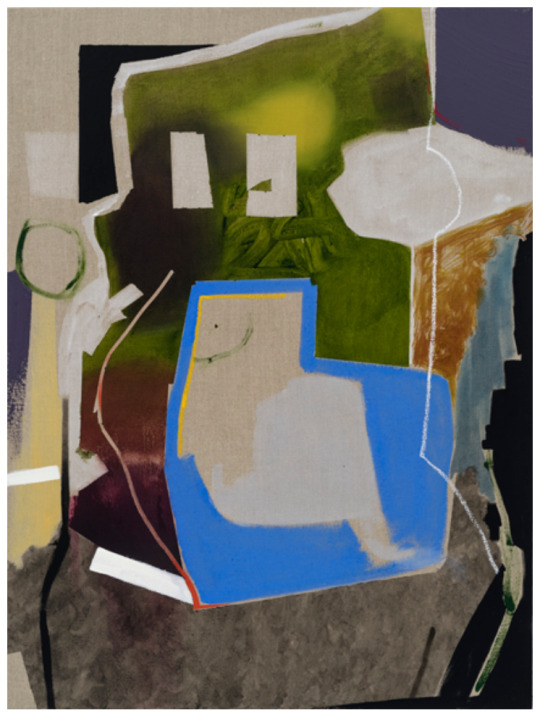
“There is a Ghost”
Oil, acrylic, and oil stick on linen
101.5cm x 76cm (40in x 30in) (image courtesy of the artist)
1.Name:
Trevor Kiernander
2.Occupation(s):
Artist/painter
3.Where are you from and what is your education?
I was born in Mississauga, Ontario, Canada, and grew up in Cambridge, Ontario, Canada, from the age of 12. I lived in Montreal between 2002-2007, London, England from 2007-2014, and back in Montreal since 2014.
Took Art Fundamentals and my Interpretive Illustration Diploma at Sheridan College, Canada, a BFA in Painting & Drawing from Concordia University, Canada, and an MFA from Goldsmiths, University of London, UK.
4.Where do you live/work (neighbourhood/city/country)?
Currently living in the Rosemont/Petit Patrie area of Montreal, and my studio is located in Parc Ex.
5.Does your location affect your practice?
Definitely, both affects and informs. I am about a 20-minute walk from my studio and I have more studio space than I have ever had. Both of these factors allow me to work a lot, and experiment with new ideas and materials on a regular basis. And only in the past few years (since being back in Montreal) have I come to realize that my work is about my relationship to space, and therefore obviously the spaces I work in.
6.What is your favourite tool in the studio?
I have made my own version of a “brush”, but it’s top secret…
7.Where do you look for your source material?
Anywhere and everywhere, really. I take lots of photos when I am out, but I also like snagging other people’s images from the internet. Also screen shots of things I’m watching on my computer. They mainly reappear in paintings and drawings as fragments, but it’s all there in my head somewhere.
8.What is your daily art world read?
Painting at the End of the World It is not necessarily a daily read, but Ian Gonczarow also runs an Instagram page of the same name and posts some really great work. I am also on a few mailing lists, like Artsy, etc., but there are a few online ones like Painters Talking Painting on FB (the new FB algorithms are pretty shit, mind, and so once you click on a news story, you seem to only ever get news from those sources). Other than that, it’s mainly Instagram.
9.What is your daily non-art-world read?
The Onion or Daily Mash. The “real world” news is too depressing…
10.What role does writing play in your practice?
Not as much as I would like it to.
11.What role does research play in your practice?
Depends on the definition of research. I read daily, and have a pretty decent library in my studio, so I am constantly referencing things, remembering essays I have read in the past, looking at artist monographs, but also getting out to see as much art as I can around town.
12.What role does collaboration play in your practice?
Not much at all, but I am always up for new things.
13.How does success affect your practice?
Again, I guess it depends on one’s definition of success? Like, I successfully left my job in London and moved back to Canada to work full-time in the studio. I think “success” follows the same plateaus you find in an art practice. You work hard at something and then finally reach a particular level, keep that up for a while until the next plateau, and so on. I definitely don’t jump on to something that is “commercially successful” and keep that going. I get bored too easily.
14.How does failure affect your practice?
I don’t believe in failure but see mistakes as something to build from. It works that way in each painting as well. I often try different things when painting, colours, mediums, techniques, directions, and if it doesn’t work out, I keep it, and work other elements into the composition to make everything relate.
15.What do you identify as the biggest challenge in your artistic process?
Being able to keep painting.
16.Who are some historical artists you are thinking about?
Paul Klee, Wassily Kandinsky, Willem de Kooning, Peter Lanyon, for painting.
17.Who are some contemporary artists you are thinking about?
Again, in painting, Amy Sillman (US), Charley Peters (UK), Delphine Hennelly (US), Leopold Plotek (CA)… there are quite a lot, actually, and many I am happy to call friends. I try to see as much painting as I can and try to keep an open mind to it all.
18.How do you describe what you are making now?
Oof. I just made myself a drawing station in my studio. It’s made out of scrap wood and a new IKEA table top I found.
As for my painting, I am working off of ideas from my current show at the Galerie d’art d’Outremont in Montreal (up until April 28th,), developing compositions and installation ideas made up of numerous surfaces. My work is continuous, meaning I don’t just make a particular body of work for a particular show, but I constantly paint, and then make a selection of work that I feel makes sense in the space I will be exhibiting in. I kinda go through a slump after a show, which I am sure a lot of people do, but I need to keep at it, so I spend a good week or two after the show, stretching and priming up some linen and canvas. I am really looking forward to working on more linen/canvas diptychs, this sort of duality thing I have been making since a residency in Leipzig in 2017-18. That, and trying to understand deeper connections between painting and music, rhythm, etc.
19.Who is an artist that you think deserves more attention?
Too many to mention. I think more attention needs to be paid to Canadian artists as a whole.
20.How can we find out more about you (relevant links etc)?
trevorkiernander.com www.instagram.com/ttothek9/
3 notes
·
View notes
Text
20 QUESTIONS FOR: BRETT BARMBY
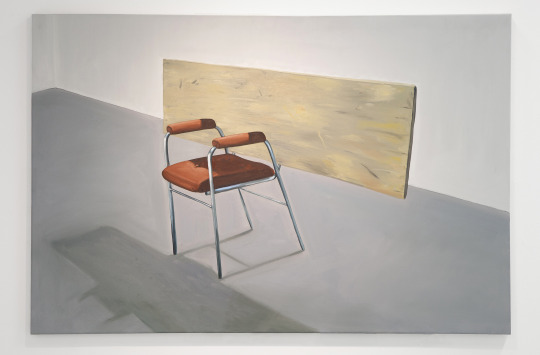
(image courtesy of the artist. From the Dibs series)
1.Name:
Brett Barmby.
2.Occupation(s):
Bike Messenger.
3.Where are you from and what is your education?
I’m from a small town outside of Calgary called Bragg Creek. I have my BFA from Emily Carr in Vancouver and my MFA from Concordia in Montreal.
4.Where do you live/work (neighbourhood/city/country)?
I live in Villeray, Montreal, and I work out of my studio in Ahunstic.
5.Does your location affect your practice?
Absolutely. When I moved to Montreal my practice shifted completely since I ran out of source images. In Vancouver, I was mostly interested in the by-laws on graffiti and the half-assed attempts to cover it up, which could result in some accidental Rothko-esque compositions. In Montreal, this is a total non-issue, so I’ve moved my focus to Quebec’s (un)official moving day on July 1st, where people will throw together assemblages of furniture in order to save a parking spot in front of their apartment for the moving truck. Montreal’s downtown core is also filled with skyscrapers built mostly in the 80’s and 90’s with some very gaudy lobbies and monolithic marble reception desks, which inspired my Reception series of 3D prints.
6.What is your favourite tool in the studio?
My brush holder, which is a scrap piece of 2x4 with some holes drilled in it (patent pending).
7.Where do you look for your source material?
Most of the things I find while at work. I ride my bike around the city 45 hours a week, so I’m constantly on the lookout for the subjects I paint. I’m most interested in things that look like art but are made totally by accident or unconsciously. I’m taking thousands of photos with my phone and treating that kind of like my sketchbook. Friends have even started supporting my obsession and will send me photos of things they find.
8.What is you daily art world read?
Instagram.
9.What is your daily non-art-world read?
Reddit, The Guardian, the trivia section on IMDB of whatever movie I just watched.
10.What role does writing play in your practice?
Writing usually comes after the paintings. It helps me to figure out exactly why I’m interested in the things I’m making, and what the work is supposed to mean or do. The writing will then inform the next set of paintings, which informs more writing, and so on.
11.What role does research play in your practice?
Literary research usually comes with the writing and helps me make sense of what I’m trying to do. Most of the research I do is just browsing online looking at other painters and trying to understand how they handle their paint.
12.What role does collaboration play in your practice?
Pretty much none, although I’m open to it. Let’s do something together with your Vernacular Abstractions. [Ed. This will happen at some point.]
13.How does success affect your practice?
¯\_(ツ)_/¯
14.How does failure affect your practice?
Failure gives me the motivation to work. If things are going wrong, or I’m getting bad feedback, it only makes me want to produce more work. During my BFA, I once made an entire solo show of 7-Eleven paintings because my professor said the first few weren’t very good.
15.What do you identify as the biggest challenge in your artistic process?
Networking, trying to get into shows, selling work, applying for grants, trying to schmooze with curators and gallerists. I’m incredibly shy and don’t go out to a lot of openings or talk to anyone there but my close friends.
16.Who are some historical artists you are thinking about?
Rene Magritte, Frans Hals, Bernd and Hilla Becher, Neil Jenney.
17.Who are some contemporary artists you are thinking about?
Josephine Halvorson, Andrew Grassie, Jesse Edwards, Charlie Sofo.
18.How do you describe what you are making now?
I’m mainly working on a series called Dibs,which are paintings of found sculptures made by ordinary people trying to save a parking spot. During a move, people will want to save a spot in front of their apartment to make things easier, but will often neglect to get traffic cones, so usually resort to using things like chairs, mops, brooms, rope, leftover construction materials, and sports equipment. There are strategies and rules that exist within this unwritten, unconsciously organized system, one that is somehow incredibly clear and efficient while at the same time devoid of language or any specificity beyond the space it occupies. There’s a certain level of complexity and creativity displayed by these people with no aesthetic goal in mind other than to simply occupy a space, and there are certain patterns or standard formats that emerge within this ambiguous system. I photograph these while riding by during my job, and later paint them isolated in an ambiguous space that could represent a galley, or a digital space reminiscent of SketchUp. The resulting paintings look like documentation shots of a certain brand of sculpture I particularly hate.
19.Who is an artist that you think deserves more attention?
Ed Bats.
20.How can we find out more about you (relevant links etc)?
My website, brettbarmby.com,
My Instagram(s): @brettbarmby, @netscape_and_chill.
#ithaca moma#Ithaca Vernacular Abstraction#20 questions#brett barmby#artist#artist interview#canada#montreal#Calgary#alberta artist
0 notes
